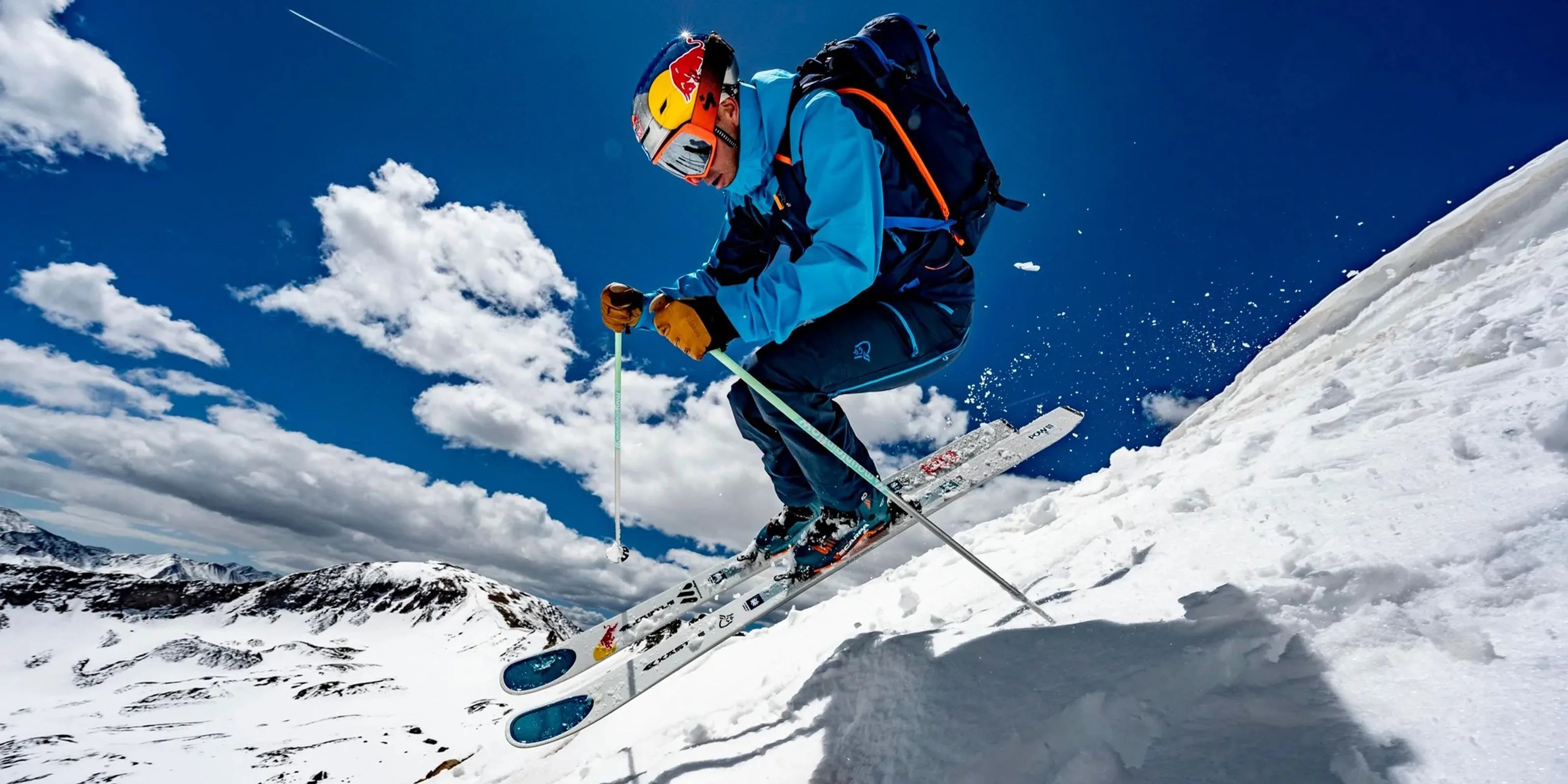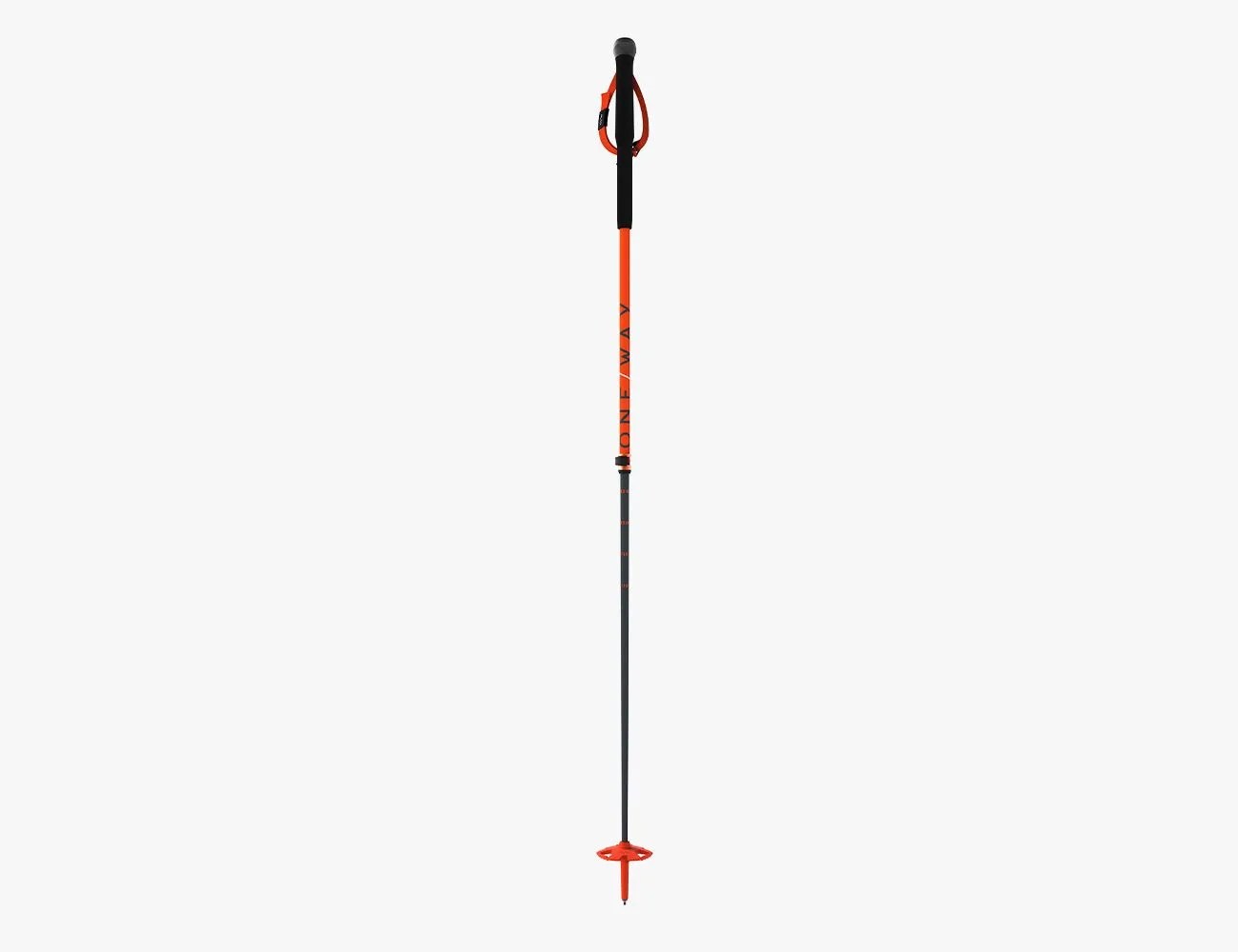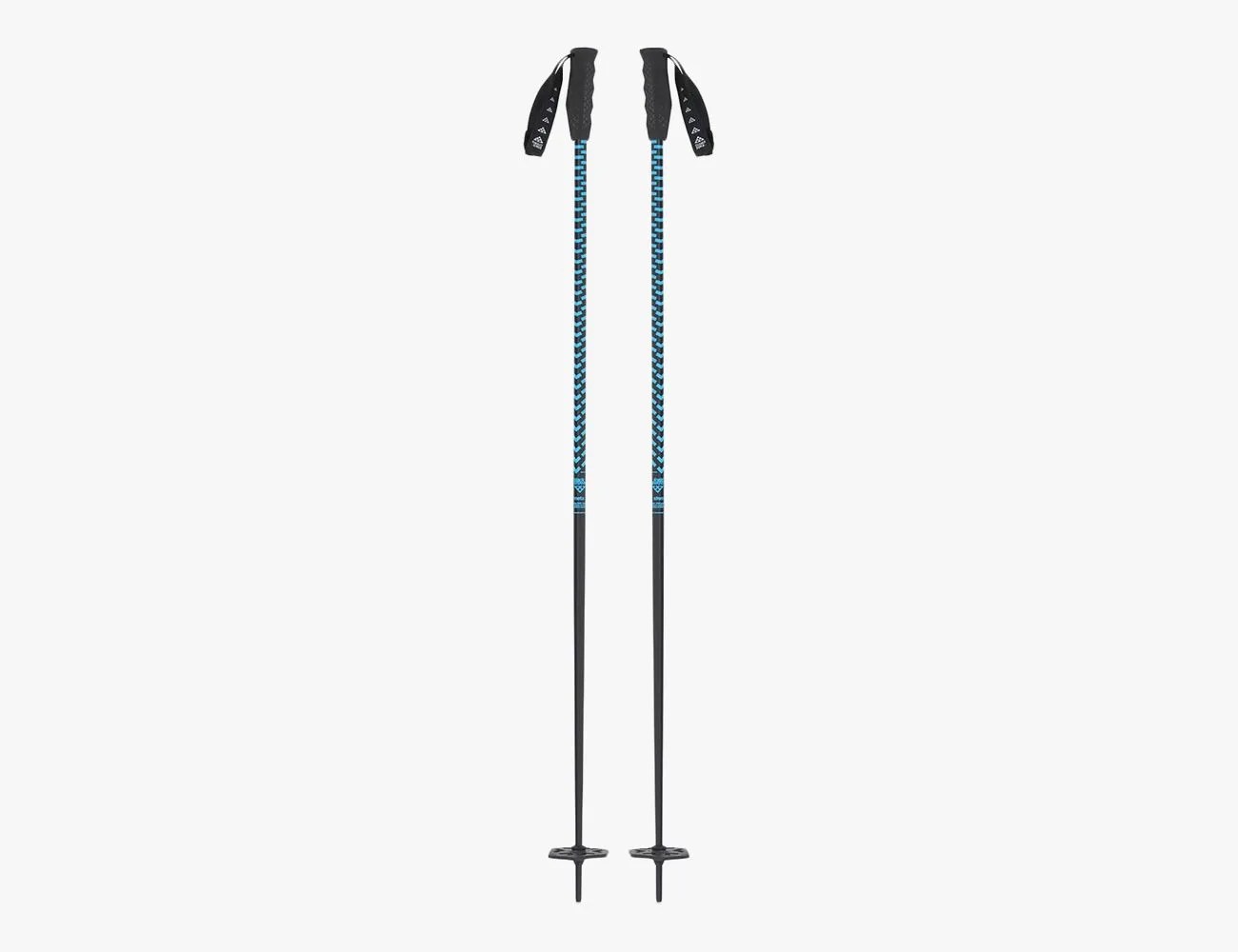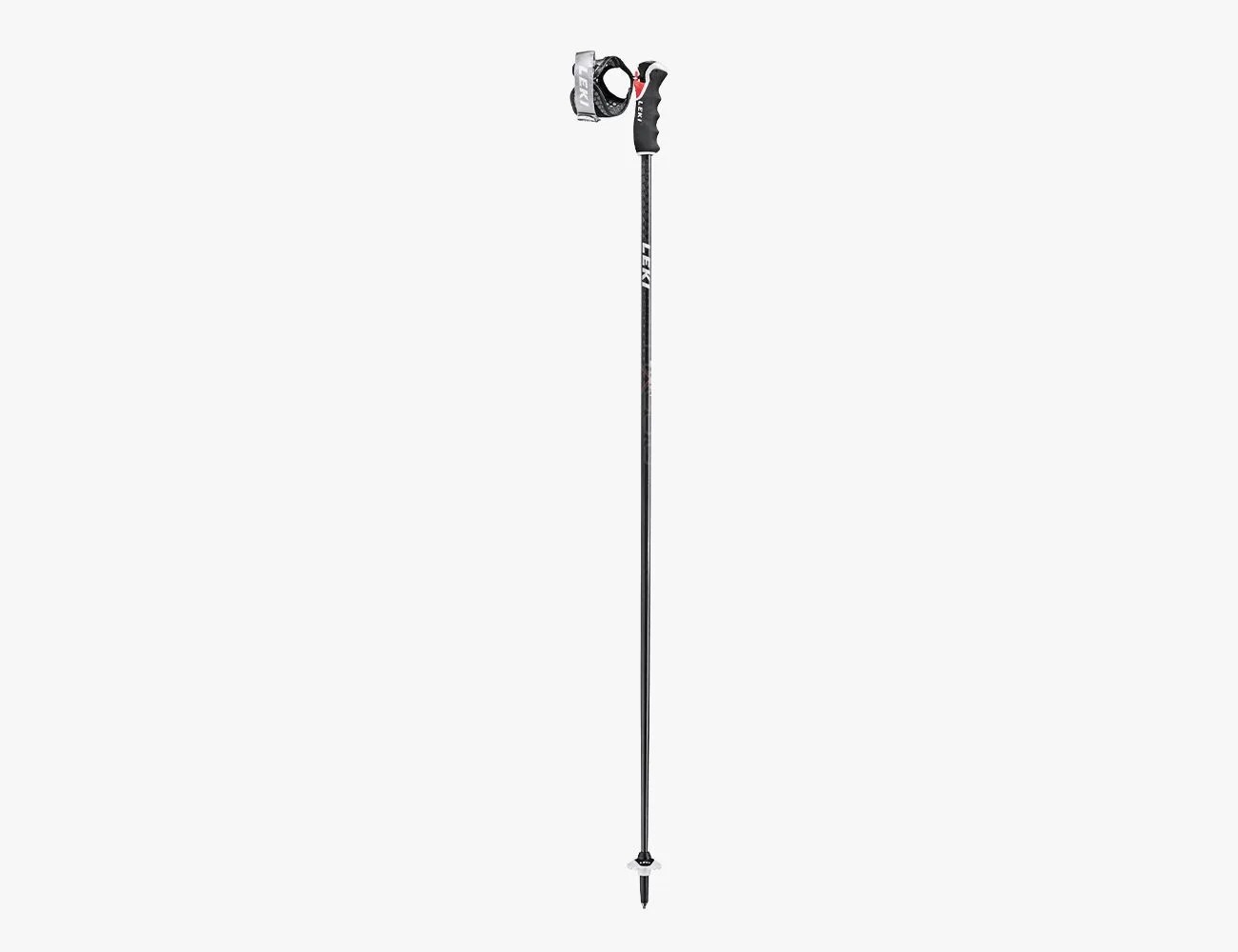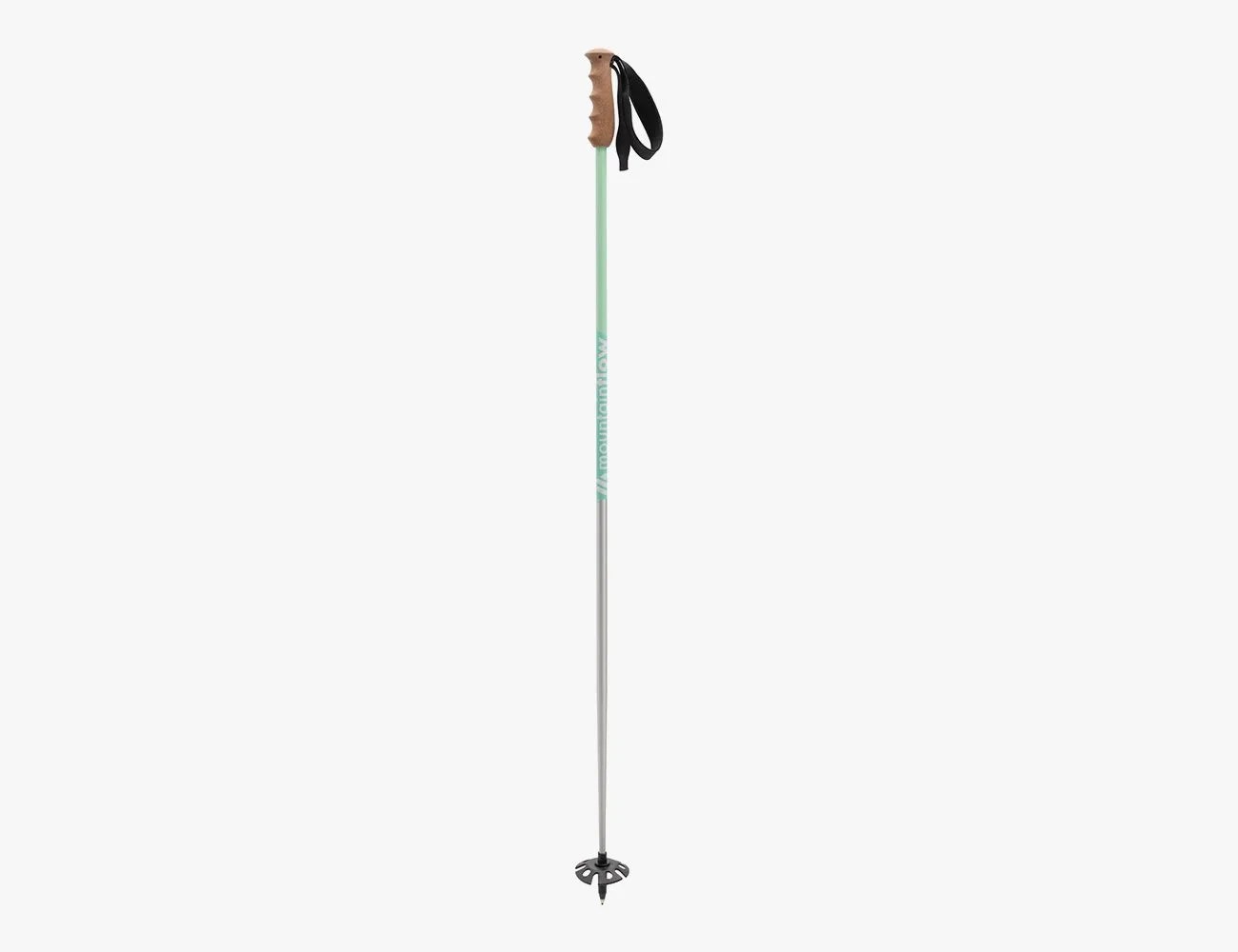Poles are an under-appreciated piece of skiing equipment. They help with balance and timing, two keys to dynamic skiing. A solid pole plant is essential to navigating mogul fields, tight trees and, especially, the steeps. And they make getting around the mountain and navigating lift lines a whole lot easier.
Yeah, any old, clunky, bent-at-odd angles pole will do the job. But a lightweight pair with a carefully balanced swing weight will make it easier and less work. If you’re in the market and don’t know where to start, worry not: we’ve got you covered.
Products in the Guide
How to buy a pair of ski poles
The most important variable with ski poles is length. But it’s best to narrow down the choices first.
Fixed length or adjustable?
Most poles are one piece of tapered aluminum or carbon, but some use two pieces that nest together to allow for adjusting the length. Most often this is for backcountry use, where skiers sometimes like a longer pole for climbing and a shorter length for skiing. But it’s also handy for growing kids, if you’re going to share a pair of poles with someone else, or just want to play around with different pole lengths. I suggest a fixed-length pole for most skiers: they tend to be more durable and lighter weight.
Materials
Aluminum is the most common material for ski poles, but the quality of the aluminum varies dramatically. Look at two numbers: width of the pole and type of aluminum. Width is a proxy for quality: narrower is better. The second number, most commonly 7075, 6061 or 5038, refers to the aluminum alloy mix. In this case, the higher the number the stronger and lighter the aluminum.
Carbon is another material used in poles. It’s lighter and more flexible than aluminum. However, while aluminum will bend before snapping, carbon fails dramatically. It’s also more expensive.
The best bang for the buck is an aluminum pole with any alloy number and a 16 or 18 mm diameter.
